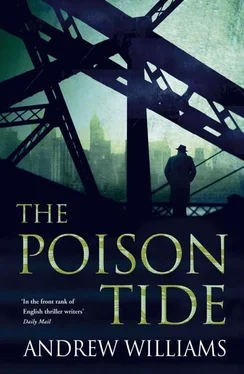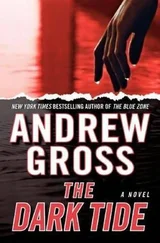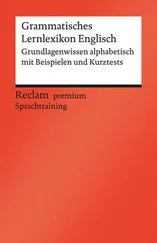Anxious not to be discovered beside the body, I slipped out of the hospital and returned to the embassy where I sent a coded signal with the news of Dilger’s death to Director MI 1[c] at the SS Bureau and DNI at the Admiralty. The following day (October 18) Dilger was buried in a mass grave for victims of the influenza virus in one of the city’s cemeteries.
(signed)
Commander Sebastian Wolff RN Retd
Historical Note and Sources
The plot of The Poison Tide is drawn from real events and the lives of those who took part in them, a story of what was and might have been. For those who like to pull the threads of the history from the fiction, here is a brief outline of the unvarnished facts and some of my sources.
As the armies of the European powers marched into battle in the summer of 1914, Irish leaders in America met the German Ambassador and his military attaché to discuss support for a rebellion. The former British diplomat and humanitarian campaigner Sir Roger Casement was present at some of their meetings. Since leaving government service he had become a prominent supporter of Home Rule for his native Ireland.
With the intention of pressing Ireland’s cause in person, Casement left America in the autumn of 1914 and took passage to Germany. Adler Christensen travelled with him as his valet. Slipping through the British blockade of the Atlantic they reached Christiania, as Norway’s capital Oslo was called at that time. During their short stay in the city Christensen approached the British Legation and offered to betray Casement. He spoke to the minister at the Legation, Mansfeldt Findlay, and presented him with confidential papers including a German cipher for which he was paid a small amount. From their conversation with Christensen the British inferred his relationship with Casement was probably of ‘an improper character’. It was the first suggestion they received that Roger Casement was engaged in a homosexual relationship, an offence punishable with imprisonment at the time.
Christensen would later tell Casement and the German authorities that the British had taken him from a hotel lobby and interrogated him but he had refused to give them any information. For many details of Casement’s life, love and politics I drew on Brian Inglis’ biography, Roger Casement. Reinhard Doerries’ books Prelude to the Easter Rising and Imperial Challenge were a source for the German-Irish connection, as were My Three Years in America , the memoirs of the German ambassador in Washington, Count von Bernstorff.
In Berlin, Casement’s principal intelligence contact was Count Rudolf Nadolny of the General Staff. As the head of Section P, Nadolny was charged with masterminding covert operations against British and French interests in America and elsewhere around the world. Although the papers relating to Section P’s activities were destroyed at the end of the war, we know from coded telegrams sent to the German Embassy in Washington that Casement furnished the count with the names of Irish republicans who would be prepared to assist with ‘far-reaching sabotage in the United States’. In return Casement was allowed to visit prisoners of war in Germany and recruit his Irish Brigade, much as I relate in The Poison Tide .
Casement arrived in Berlin with great hopes, confident the Germans were ‘fighting for European civilisation at its best’. But isolated from comrades and decision-making in Ireland and America, and cast down by his inability to persuade his countrymen in the camps to join his brigade, he suffered an emotional collapse. In December 1915 he wrote with characteristic humanity that, ‘it is dreadful to think of all the world beginning the New Year with nothing but Death — killing and murdering wholesale, and destroying all that makes life happy… I feel very sad, and it has been the most unhappy Christmas I have ever spent.’ By then he had learnt from his friends in America that his ‘treasure’, Adler Christensen, had been spending money raised for their living expenses on a girlfriend.
Robert Monteith’s Casement’s Last Adventure offers a first-hand account of Casement’s time in Germany and his attempts to recruit an Irish Brigade. His friend, the Princess Blücher, wrote of Casement’s visits to her in An English Wife in Berlin . At the other end of the social scale Madeleine Doty’s Short Rations is a vivid account of the effect of the British blockade on the lives of the ordinary Berliners that she knew.
The news that a date had finally been set for a rising in Ireland reached Berlin on 17 February 1916. A telegram from the German Ambassador in Washington announced ‘revolution shall begin Easter Sunday’. The Irish requested up to 50,000 rifles, machine guns, field artillery and German officers. Count Nadolny offered only 20,000 rifles. Casement was landed from a U-boat on 20 April and arrested after only a few hours ashore. The trawler carrying his guns was intercepted by the Royal Navy. He was tried in London and condemned to death. To undermine the case of those seeking his reprieve, Captain Hall, the Director of Naval Intelligence, circulated salacious extracts from his diaries with details of payments made for sexual services and his descriptions of breathless encounters with young men he had met on diplomatic missions for His Majesty’s Government. For accounts of Casement’s execution at Pentonville Prison and the opinion of the public at home and abroad, I drew on newspaper reports, in particular the coverage of the New York Times .
The aristocrat at the heart of the German–Irish intrigue had lost patience with Casement long before the Easter Rising. By the spring of 1916 Count Nadolny’s principal concern was the sabotage campaign he was orchestrating against Allied interests in neutral America and on three other continents.
In the Prologue to The Poison Tide , Count Nadolny echoes German Staff thinking that the war would be unprecedented in its reach, fought not just by soldiers but by the people. ‘It will,’ the War Book of the German General Staff predicted, ‘destroy the total moral and material resources’ of the enemy. The conflict was framed in terms of a Darwinian struggle. ‘War gives a biologically just decision…’ the influential German general Friedrich von Bernhard wrote, ‘…not only a biological law, but a moral obligation, and, as such, an indispensable factor in civilisation.’ Or, as Count Nadolny predicts in my story, ‘victory will be secured by those who prove the fittest’. If victory was a ‘moral obligation’ then the means used to secure it were of little consequence. The British First Sea Lord, Admiral John Fisher, put it like this: ‘the essence of war is violence. Moderation in war is imbecility.’ And in this Total War everyone would play a part — scientists and doctors too.
Preparations for a German biological weapons programme seem to have begun in early 1915. Count Nadolny directed its operations for the General Staff, while Professor Carl Troester was responsible for the culturing of anthrax and glanders bacilli at the Military Veterinary Academy in Berlin. How and when Anton Dilger was recruited and why he agreed to risk his life serving German interests in his native America are matters of speculation. His involvement in the campaign, the help he received from his family, the house in Chevy Chase and the network of Albert, Hinsch and Hilken was much as I relate in The Poison Tide . To help my story I have changed the chronology of his activities in the United States, some of his family relationships, but above all the target of the campaign. There is no evidence to suggest Anton Dilger and his associates were intending to attack Allied soldiers or civilians, only the horses, mules and cattle they needed for the waging of the war.
Читать дальше












